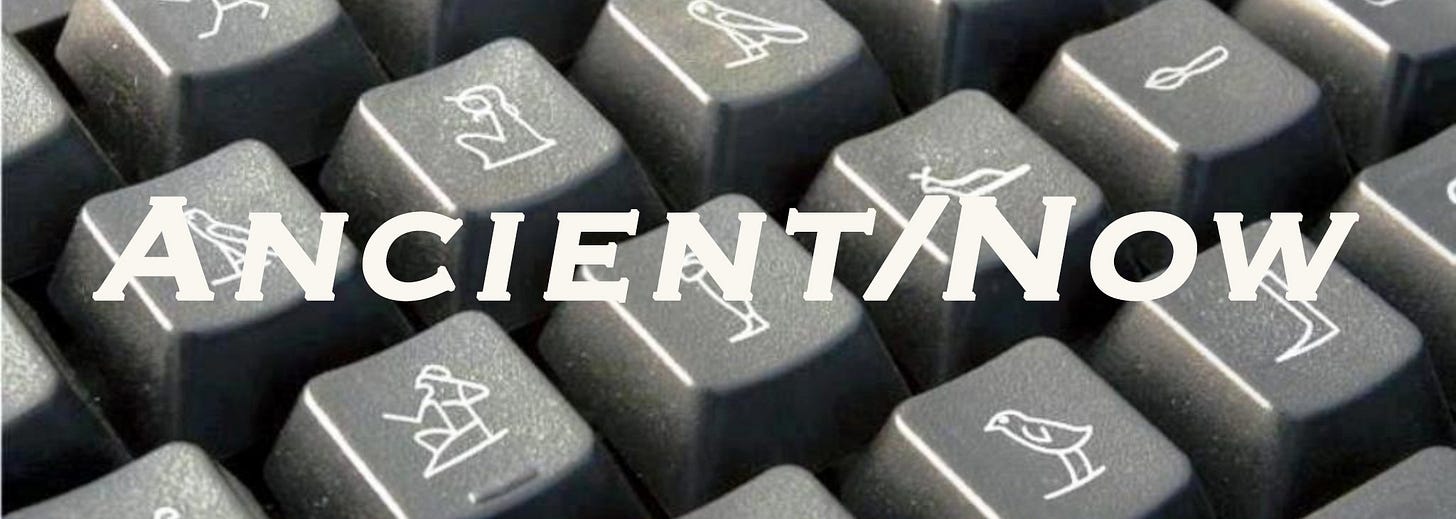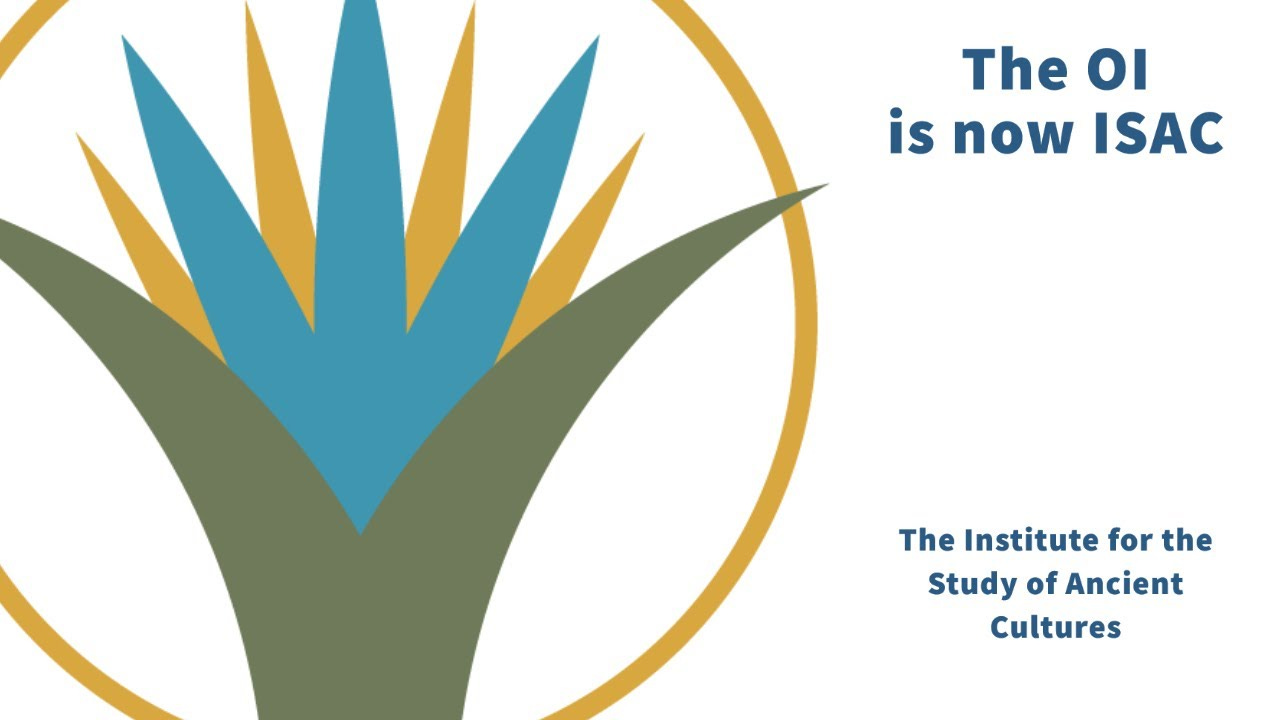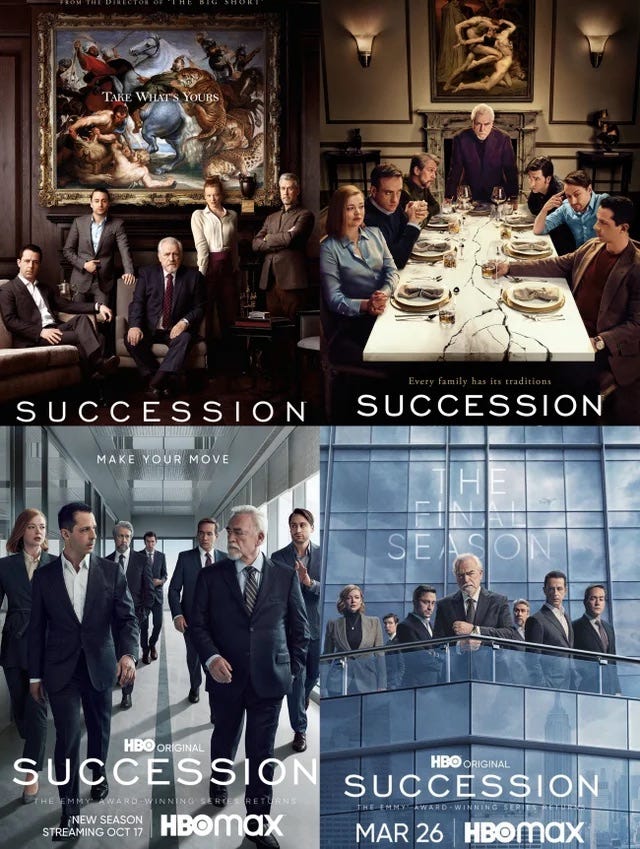Ancient/Now - April 17th
Severed hands discovered at Avaris, an institutional name change, ancient signatures, and more
First osteological evidence of severed hands discovered in Avaris

These severed human hands have been common knowledge to Egyptologists for some time, but analysis and publication takes time! Last month Scientific Reports published an article outlining the first osteological evidence of severed hands in ancient Egypt. In short: the right hands of twelve individuals were discovered in a 15th Dynasty courtyard leading to a throne room. Scholars have known about the ancient Egyptians’ practice of taking the hands of enemies because they are mentioned—and pictured in grisly detail— in temple and tomb reliefs, but this discovery is the first archaeological evidence of the practice. Some details haven’t been determined, yet. For instance,
It is unclear if the hands were taken from dead or living individuals. After removing any attached parts of the forearm, the hands were placed in the ground with wide-splayed fingers, mainly on their palmar sides. The osteological analysis not only supports the archaeological interpretation of this evidence but also adds more detail regarding trophy-taking practices in Ancient Egypt.
The evidence suggests that these hands were taken as trophies from fallen enemies rather than as a punishment for criminals. Interestingly, it cannot be ruled out that one of the hands belonged to a woman. If the hand did belong to a female (warrior?), the authors note that it would not be surprising:
Throughout history, women have played various roles in military societies. Women and warfare did not exist in separate worlds. On the contrary, they were inextricably linked to the political, social and religious spheres.
For further analysis of the practice check out UCLA’s own Danielle Candelora’s study, “Grisly Trophies,” published in the Journal of Near Eastern Archaeology.
The Oriental Institute has changed its name
The University of Chicago’s Oriental Institute has changed its name to The Institute for the Study of Ancient Cultures, West Asia & North Africa (ISAC) “to better reflect the geographic focus of its research and scholarship.” ISAC’s leadership also points out that the meaning of the word “oriental” (which just means “eastern” from the Greek!!) has changed over the last century, and can even be misleading to modern audiences who might see that word as a specific reference to east Asia, not west or central Asia. While these University of Chicago points are valid, it is also true that within contemporary academic circles conscious efforts are being made to move away from the European-facing terms “Middle East” or “Near East”—middle or near to what?—as well as eschewing the moniker “the Orient” as we so seldom homogenize “the Occident” in the same way. (For a brilliant display of such European-facing racism in action, just go to Disneyland and ride It’s a Small World After All, where Europe is treated with thorough differentiation while the continent of Africa receives no such particularism, aside from Egypt. But that’s a discussion for another day!) Many scholars are now opting for simple geographic designations when West Asia and North Africa are described, because applying the colonial and Eurocentric description “oriental” to these places is no longer considered appropriate. Now we ask whether such renaming is representative of emergent globalized diversity and inclusion, well and truly, or performative. It’s up to all of us, after all!
Ancient Greek and Roman Artisan Signatures

Authorship and signed works as we think of them today were not common until the ancient Greek artists and artisans (and later Roman artists) made it more of a common, if sporadic, practice. (But Alisée Devillers, currently an postdoc at UCLA, is steadily working on artist’s self-representation in ancient Egypt from Predynastic to Greco-Roman times! Check out her article with Dimitri Laboury in Kara’s Ancient Egyptian Society volume!) Artists signed “ceramics, mosaics, and mass-produced vessels such as amphorae” as well as gemstones. There are only about 1,000 recorded signatures of artists from ancient Greece, but they provide interesting information regarding the production of works. For instance, in some cases both the potter and the painter of ancient vessels are named, confirming that such vessels are the work of multiple artists. There are even rare instances when artists signed their names and identified themselves as a student of a particular artist, offering possible insight into workshop production. But can we trust what these names tell us?
The degree to which a given name in the ancient world can be trusted has been questioned by art historians including Sanchita Balachandran. As associate director of the Archaeological Museum at Johns Hopkins University, she works regularly on reconstructing the lives and experiences of artisans such as ancient potters. In conversation, the curator and conservator suggested that signed names of potters and artisans—who were often classed as enslaved, freed, or foreigners — could necessitate more subaltern readings. “Is there something subversive about signing your name as an enslaved individual?” she asks. “Are these moments of resistance? Are they saying, ‘I am here’?”
When viewed from this perspective, these signatures may provide us with an opportunity to draw new understanding about the experiences of enslaved people in the ancient world. In other instances, maybe these signatures were simply meant to be an expression of pride in one’s work, or perhaps a way for more famous artists to authenticate their work. By the Roman period in particular, collectors prized signatures as a way to demonstrate that the thing they possessed was a genuine work by a famous artist. Today we infuse the same value into artists signatures, holding signed works of art as more valuable and authentic. It’s all about the social competition, after all. Is that a real Prada handbag, or a knock-off?
The study of these inscriptions on marble or parchment, or etched into onyx, also reveals something about our current moment. They cast into relief the deep modern fixation with the notion of authenticity and the value placed on singularity, in a way that might be distinctly foreign to many ancient art collectors or to those who perused art in the great villas, gardens, and quasi-museums of antiquity. All value is, at the end of the day, a human construction.
We humans do value singularity and authenticity, and we are carrying this value into the digital age with us (think of NFTs!). Ironically, the digital age is also proving to be a time in which skilled Photoshop images and deep-fake videos are becoming more ubiquitous and easier to make. The question is, how will these digital mediums change our perception of “authentic” in the future?
What else were we reading this week?
In Cairo, a Mansion Where the Layers of History Show Through (reuse of space and objects are our fave subjects)
Zahi Hawass publishes his debut novel (no we have not read it yet!)
The secret tunnel of Seti I (where albino crocodiles dwell haha)
Sarcophagus of Pharaoh Ramses II unveiled in Paris in rare loan to France (Kara is publishing this object in her forthcoming Recycling for Death book!)
New Mexico Is Losing a Form of Spanish Spoken Nowhere Else on Earth (and this is just one of so many lost languages…)
The Meaning and Symbolism of Swimming-Girl Spoons from Egypt (love these objects of the rich and famous)
Tripping in the Bronze Age (just trust us)
Colleges Should Be More Than Just Vocational Schools (Humanities majors get good jobs! No really, they do! And they have a whole lot more fun at university too)
One more thing…
We’re willing to bet we have some fans of HBO’s hit tv series Succession among our readers, and as its final season plays out we can’t help but be reminded of the ways in which the show’s creators have deliberately echoed history and themes of power throughout the show. Beginning with the name of media mogul Logan Roy’s youngest son, Roman (a nickname for his given name of Romulus), the show’s writers make clear to viewers some of the historical connections they wanted to draw as they built their story. Anyone familiar with the complex, twisted, and bloody history of the succession of Roman emperors can see the immediate parallels to succession within the modern rich and powerful capitalist Roy dynasty. However, the writers and producers of Succession included plenty of historical visual connections to wealth and power throughout the series as well. This 2021 Hyperallergic article “How the Art in Succession Paints a Picture of Power” provides an excellent breakdown of some of the artwork shown in the series and how these works are subtle references to themes of Orientalism, war, ruthless historical leaders, royal court spies, and even Dante’s Inferno. As the final episodes air, keep your eyes peeled for more historical and art historical subtext!









I am happy to see you mention the OI to ISAC change. I love about an hour away and consider it a “second home.” The ISAC museum has some of the most wonderful Near Eastern collection on display and I encourage anyone and all to visit it on the University of Chicago campus if in the area.